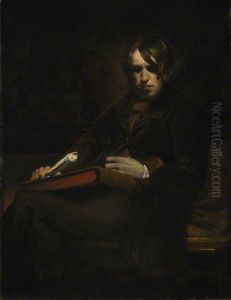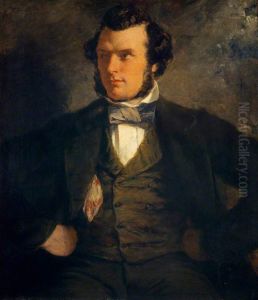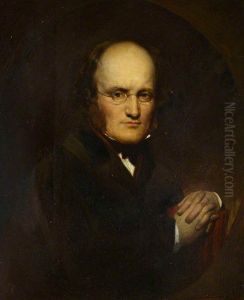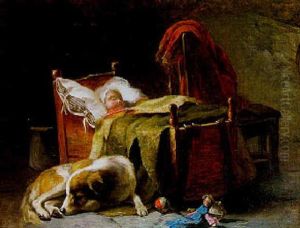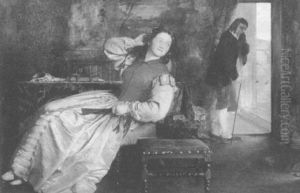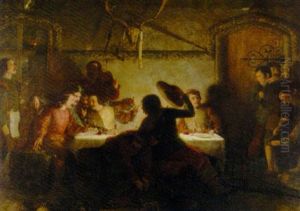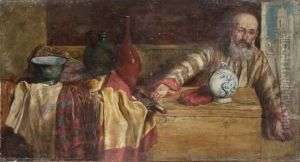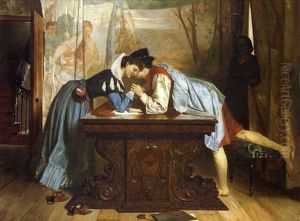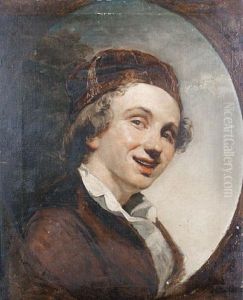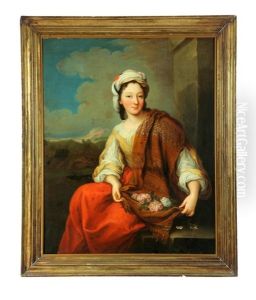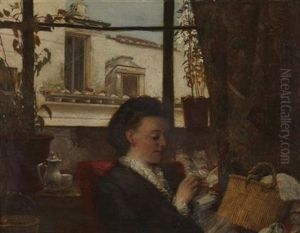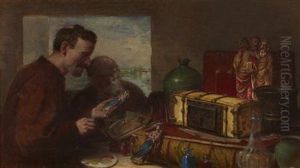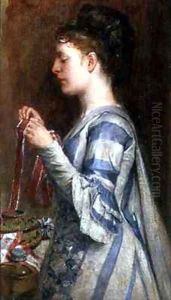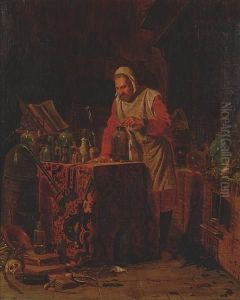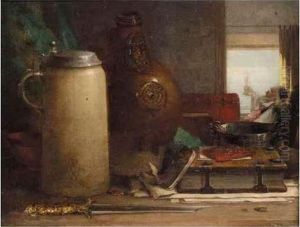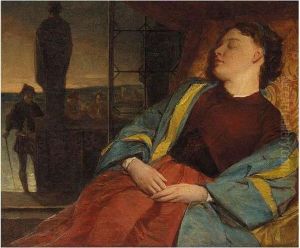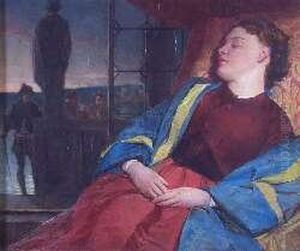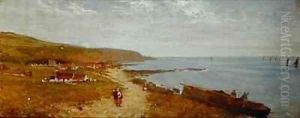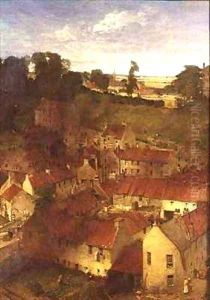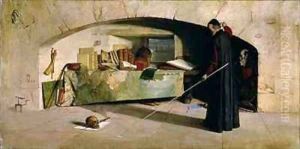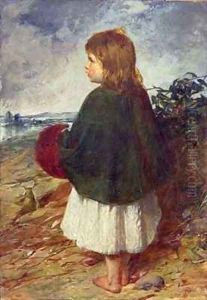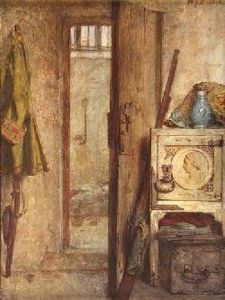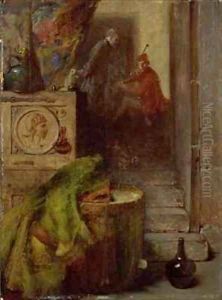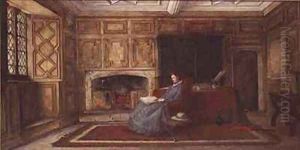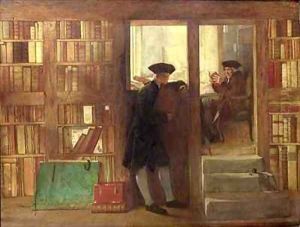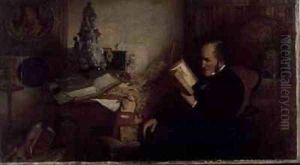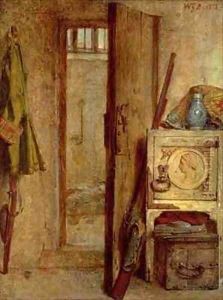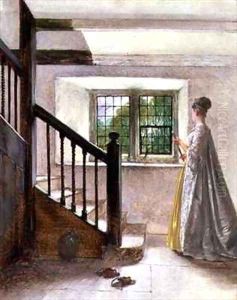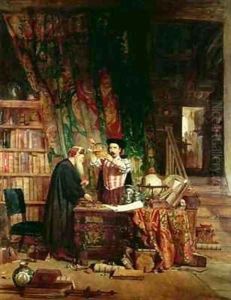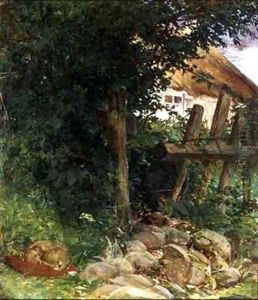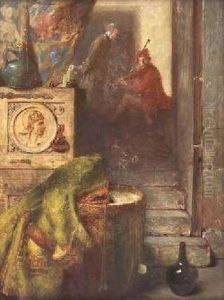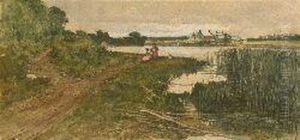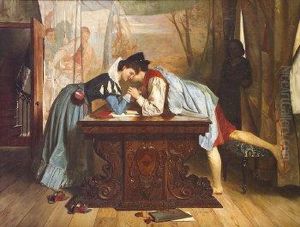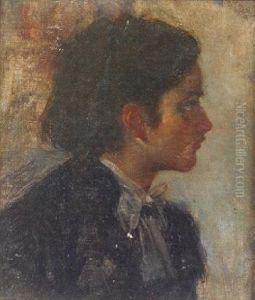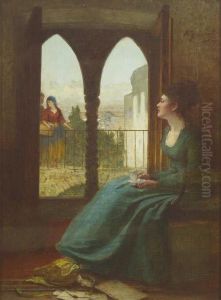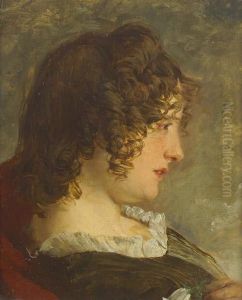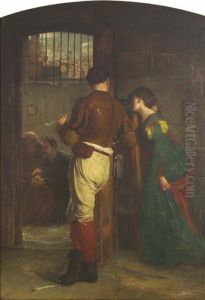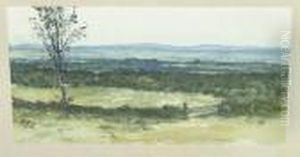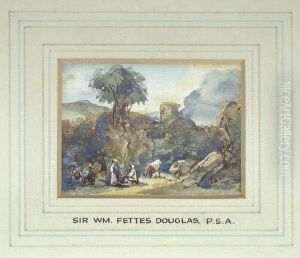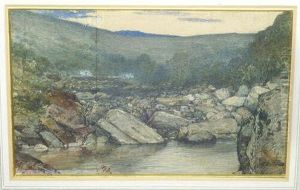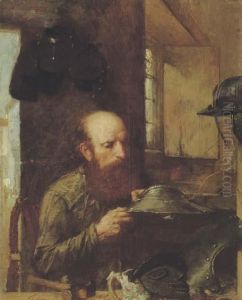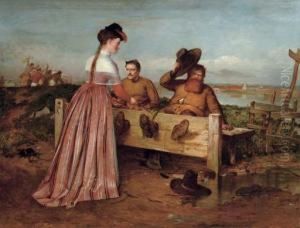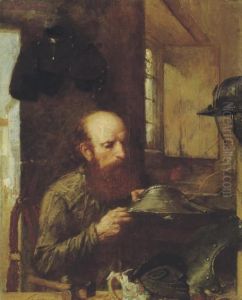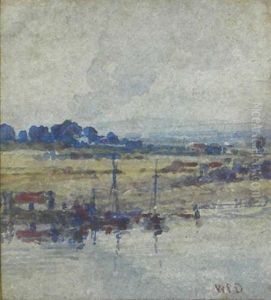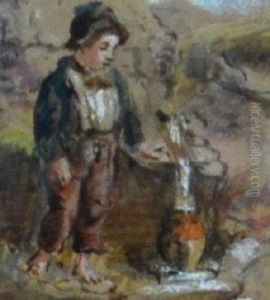William Fettes Douglas Paintings
William Fettes Douglas was a Scottish painter who was born on 8 April 1822 in Edinburgh. He was primarily known for his historical and genre paintings which often included elements of magic, alchemy, and the occult. Douglas developed an early interest in art, but began his career in a bank due to family pressures. Despite this, he continued to pursue his passion for painting and eventually became a student at the Trustees’ Academy in Edinburgh, which was then one of the leading art schools in Britain.
Douglas's work was influenced by the Dutch masters, and he was particularly known for his detailed and atmospheric interiors that were often lit by candlelight. He also had a keen interest in antiquarian subjects and portrayed scenes of historical significance or those that featured esoteric knowledge. His paintings often reflect a narrative quality and feature objects with symbolic meanings.
Throughout his career, Douglas was actively involved with the Royal Scottish Academy and was elected as an associate in 1852, becoming a full member in 1854. He served as the curator of the Academy's collections for a number of years. In 1877, he was appointed the president of the Royal Scottish Academy, a position he held until his death. During his tenure, he was instrumental in acquiring the land and raising funds for the construction of the new Royal Scottish Academy building, which opened in 1896, five years after his death.
Douglas also had an interest in literature and was a friend of the writers George MacDonald and Lewis Carroll. He was known to have illustrated at least one of MacDonald's books and was an avid reader whose literary interests often intersected with his artistic themes.
William Fettes Douglas passed away on 18 October 1891 in Edinburgh. His legacy includes not only his contribution to Scottish art but also his influence on the development of the Royal Scottish Academy and his efforts to foster a supportive environment for artists in Scotland. His works continue to be appreciated for their historical and symbolic significance, as well as their technical skill.
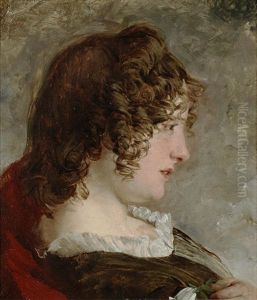
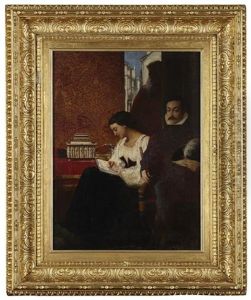
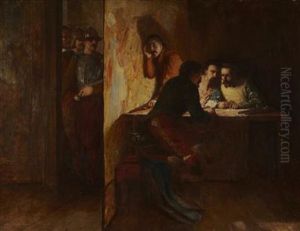
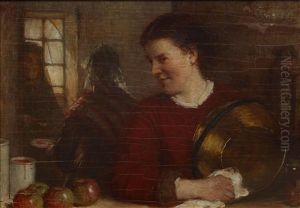
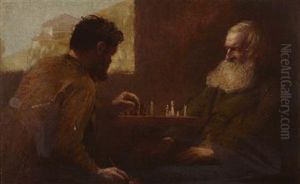
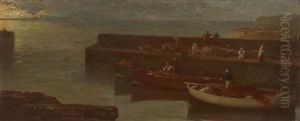
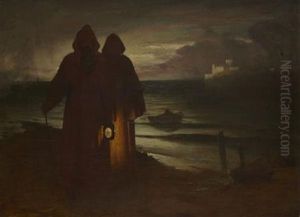
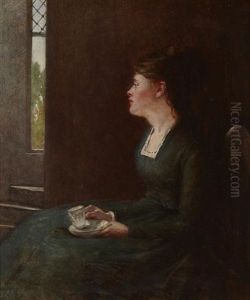
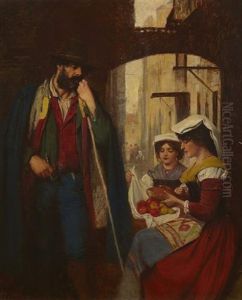
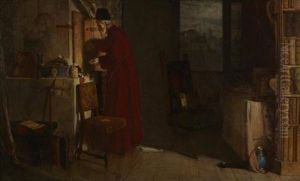
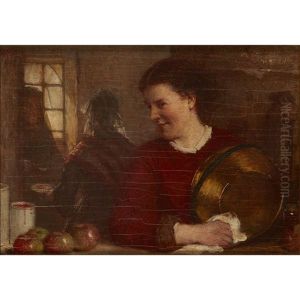
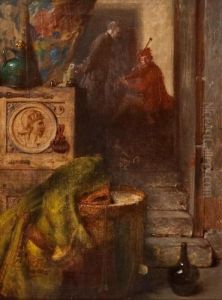
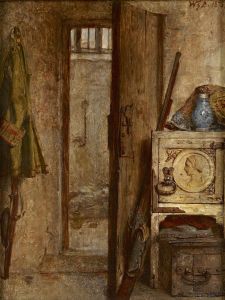
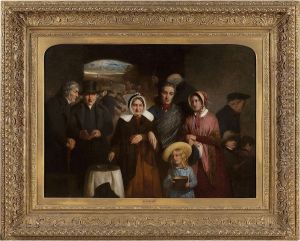

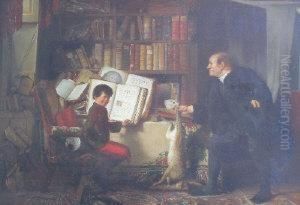

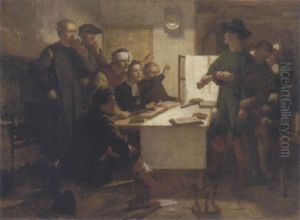
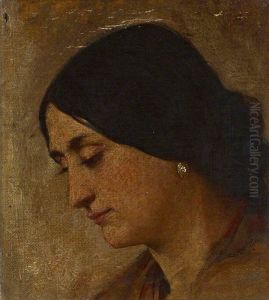
![David Laing, 1793 - 1878. Antiquarian [recto]; a study for the figure of Luther [verso]](https://www.niceartgallery.com/imgs/4681372/s/william-fettes-douglas-david-laing-1793-1878-antiquarian-recto-a-study-for-the-figure-of-luther-verso-a84d5f96.jpg)
